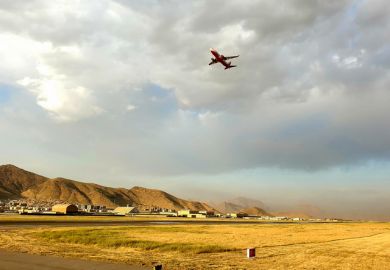This is a very annoying book. The annoyance flows from the twin realisations that it is trying to describe something quite important and doing so in a language that is obscure, overly complex and repetitive.
The central story about the way in which infrastructure is supplied, priced and managed and the ways in which it develops to exclude places, income groups, ethnic groups and communities from full participation in a modern society is undoubtedly important. The book provides numerous case studies of highway, water, energy, pedestrian and communications infrastructures to show that the dominant tendency is towards privileged access for the few and a declining, residual degree of access for the poor and the dispossessed. This is directly linked to technological and ideological developments: sophisticated communications and computer monitoring technology allow a degree of direct measurement and variability in supply unheard of in the past, and this has combined with the organisational fluidity provided by liberalisation and privatisation. Put crudely, it is now possible to vary the quality and quantity of transport, safety, security, space, intranet, water and energy provision to provide high-quality, privileged services that bypass more generally available free or cheap services that are more unreliable.
The book creates a depressing picture of US shopping malls, sky walks, electronically priced highways and privatised spaces (including gated communities), which give physical expression to extremes of income and wealth and extremes of juxtaposed wealth and misery in the urban landscape. There is nothing new in this. Torsten Hagerstrand wrote in the 1960s about society's partition into those who were very mobile and those who hardly moved at all, and the spatial juxtaposition of the very poor and the very rich is a constant preoccupation of social and historical geographers. The book does make a welcome contribution in describing the deepening global intensity of these developments and making explicit the linkages with privatisation, deregulation and liberalisation. Gated communities in South Africa, Brazil and the US are linked to new self-contained housing, shopping, recreation and parking complexes and to the development of communications-rich technological centres for inward investment and economic development in Southeast Asia. All these developments represent key elements of "splintering urbanism" and an emerging global ethic of free market, highly differentiated and fluid infrastructure provision.
Yet there are occasions when the authors take us too far into a world that has more in common with the authoritarian and technological heritage of science fiction than with reality. I do not question the case studies pointing out links between privatised space and surveillance and between the poor quality of generally available public services and the decline of the public realm, but the selection is biased towards the general argument. We are told of the death of an American woman, killed while trying to cross a multi-lane highway because her shopping-mall destination had deliberately excluded buses to keep out the undesirables who used them. This is an important piece of information, but it should be set against equally important information about the rich networks of public transport and walking and cycling access to shopping areas in Danish or German cities.
The examples in this book do not begin to convey the richness of the public realm, open access, and high-quality and safe spaces that can be found in many European cities, and in parts of Australia, such as Brunswick and Fitzroy in Melbourne or in Fremantle. Yes, there are indeed sky walks in North American cities that give privileged groups separate and secure pedestrian paths, while the dispossessed are relegated to dirty or dangerous pedestrian spaces at ground level. But this wholly undesirable development should be evaluated against the network of pedestrian routes in Albertslund, a wonderfully accessible and socially mixed suburb of Copenhagen. These routes deliberately take pedestrians through the town hall to accentuate the links between physical and democratic access.
This is not to deny the importance of the examples given in this book, but we do need to know that to counter this depressing set of failures in urban design and democracy there is an equally large set of really good examples supporting the idea of "unsplintering urbanism" and success in urban design and democratic access.
Moreover, the book's messages are dulled and dimmed by complex, obscure language. It is not helpful to be told: "In a sense, cars, and the enormously complex sociotechnical 'hybrid' infrastructures that support them, work as 'territorial adapters' for the decentralised, polynucleated metropolis." Or: "First motorisation has supported a shift in the use of streets from multi-use meetings and transit spaces to single use spaces that do nothing but vector car flow or house parked or grid locked stationary vehicles." And it is certainly not helpful to be invited to contemplate the significance of Bruno Latour's comment: "The sewer system may be comprehensive, but nothing can guarantee that the tissue I drop on my bedroom will end up there." The book is replete with such language and clever quotations, and they detract from the power of simple description and rich explanation. Reality may be very complex but the concept of "splintering urbanism" does not add that much value to our understanding of social polarisation, spatial inequality and the substitution of corporate strategy for local democracy.
Towards the end, the authors draw our attention to the "challenges of urban democratisation" but drop the subject almost as quickly as it is raised. It is clear that the preceding 400 pages have nothing to say about how this "challenge" could be met or even better understood. The overriding impression in the last few pages is that the authors realise that their long description in obscure language is not really taking us anywhere. This is a shame. Enough material has been assembled to meet the hint of a promise made on page 406 to (reject) "the tendency of postmodern theory to withdraw from practical policy suggestions on issues of socialisation, urban planning and the desired nature of the state." We are still waiting for practical policy suggestions. They are not in this book.
John Whitelegg is professor of sustainable development, Stockholm Environment Institute, University of York.
Splintering Urbanism: Networked Infrastructures, Technological Mobilities and the Urban Condition
Author - Stephen Graham and Simon Marvin
ISBN - 0 415 18965 9 and 18964 0
Publisher - Routledge
Price - £80.00 and £22.99
Pages - 479
Register to continue
Why register?
- Registration is free and only takes a moment
- Once registered, you can read 3 articles a month
- Sign up for our newsletter
Subscribe
Or subscribe for unlimited access to:
- Unlimited access to news, views, insights & reviews
- Digital editions
- Digital access to THE’s university and college rankings analysis
Already registered or a current subscriber?



